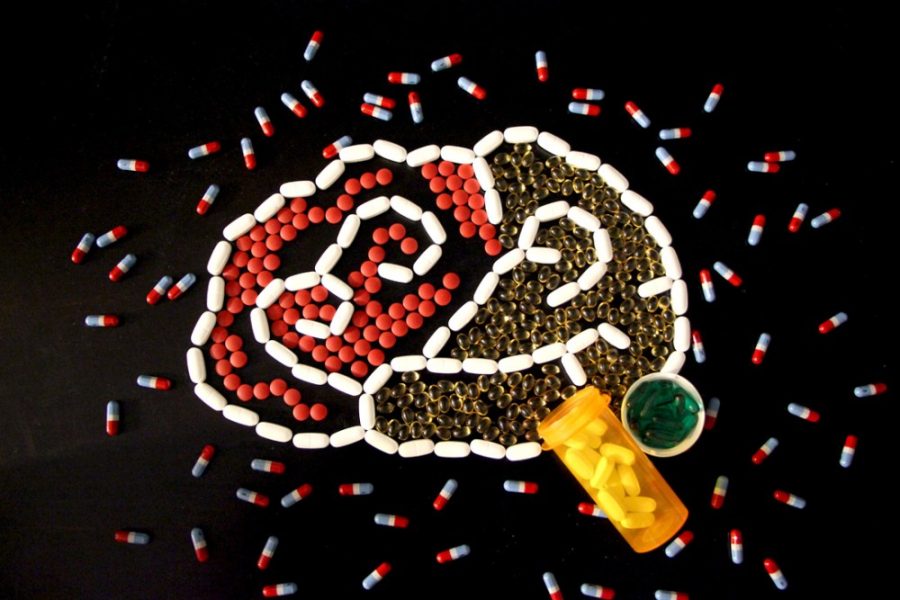It’s no surprise some students use Adderall to study for an exam. Let’s turn the tables and study Adderall’s biological effects on us.
According to a survey conducted by Campus Health Service last year, about 13 percent of UA students admitted to using attention deficit hyperactivity disorder medication like Adderall and Ritalin without a prescription in the year prior the study, while close to 7 percent used it in the month prior to the study.
Dylan, an accounting junior whose name has been changed to protect his identity, is among the 13 percent without a prescription. He insists his education hinges on Adderall.
“I feel more awake and zoned into what I’m doing,” Dylan said. “Whether it be homework or tests, I can focus a lot more on one thing and prioritize a lot more.”
Each time Dylan ingests Adderall, it’s absorbed into his bloodstream and eventually makes its way to the brain, explained Dr. Kathy Smith, a clinical associate professor of psychiatry and director of the Division of Child and Adolescent Psychiatry. Once there, the drug prevents Dylan’s neurotransmitters — chemicals made by the body that initiate brain-cell communication — from retreating back into the cell.
“Because there are more neurotransmitters available, those neurons are more [effective],” Smith said.
The anterior cingulate cortex, dorsolateral prefrontal cortex, orbitofrontal cortex and primary motor cortex are locations of the brain that involve selective attention, sustaining attention and problem solving, impulsivity and hyperactivity, respectively, Smith said. Larger concentrations of neurotransmitters in these locations construct Dylan’s ability to enhance his attention.
“Chemically, Adderall is a mixture of amphetamines,” said David Nix, a professor in the department of pharmacy practice and science. “There is risk of using the drugs to prolong awake time and focus, and then end up ‘crashing’ during the exam.”
Dr. Noshene Ranjbar, a child and adolescent psychiatrist and assistant professor of psychiatry, counsels a number of patients who speak to her about their Adderall dependence.
“Because there are addictive qualities to Adderall, people can develop dependence and need more and more,” Ranjbar said. “I try to find the real reason behind their use of Adderall.”
Like Dylan, Alexis Dallas Maytorena, an undeclared junior, requires Adderall to perform well in school. Unlike Dylan, she has a prescription and has been diagnosed with attention deficit disorder.
“When I’m on Adderall, it feels normal, and I feel fine,” Maytorena said. “When I don’t take it, I think: Oh my gosh, why can’t I just sit here and listen to the lecture?”
Like most stimulants, the common side effects when taking ADD and ADHD medication are insomnia and appetite suppression, Smith said.
Admittedly, Dylan does have a few complaints that reflect the common side effects.
“If I take it too late at night, I can’t sleep,” Dylan said. “It kills your appetite and wake up the next morning feeling groggy.”
These effects may seem minor compared to his complaints that others misuse Adderall to stay up before they go out to drink or just to feel the buzz it provides.
With patients that misuse Adderall, Ranjbar said she tries to educate them about brain and heart functions and shares the experiences of others that have had uncommon side effects like seizures, strokes, hallucinations or heart attacks.
One student-run club understands these possible dangers. The Student Health Advocacy Committee wants to create a permanent drop box on campus for old or expired medications students may have, according to Stephanie Kha, the director of SHAC and liaison for Campus Health.
“We are trying to educate students that [Adderall] actually can be very dangerous to your health,” Kha said. “And it’s our hope that we can help reduce the misuse and abuse of prescription drugs.”
_______________
Follow Dara Farhadi on Twitter.









